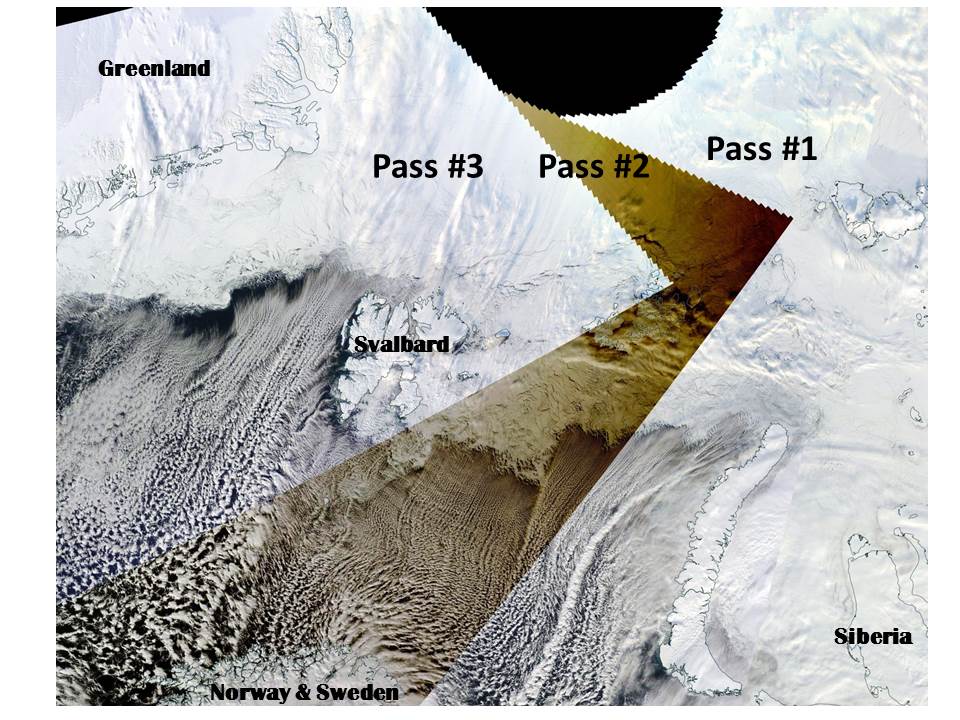Here’s a NASA MODIS view of this morning’s solar eclipse from the Terra polar-orbiting satellite. Terra takes a “snapshot” as it passes over every ~100 minutes, and this montage shows three successive orbits, with the second orbit capturing the effect of the eclipse on the solar illumination of the landscape and clouds. Note the distinctive difference in color (click image for full-size):

 Home/Blog
Home/Blog




